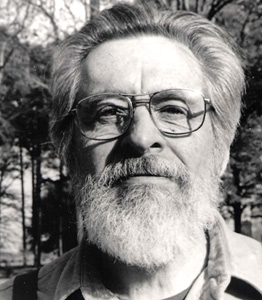Happy 85th, Ben Johnston
 In every field of endeavor, there are people who are famous for being unknown. Perhaps unknown is the wrong word–more like known and admired mainly by others in the same field who wonder why they aren’t better known to the public at large. Despite having published several admired novels, William Gaddis was known mainly to other writers. For many years, my friend, the sadly late Steve Lacy, was known mainly to other jazz players.
In every field of endeavor, there are people who are famous for being unknown. Perhaps unknown is the wrong word–more like known and admired mainly by others in the same field who wonder why they aren’t better known to the public at large. Despite having published several admired novels, William Gaddis was known mainly to other writers. For many years, my friend, the sadly late Steve Lacy, was known mainly to other jazz players.
Ben Johnston, born 85 years ago today in Macon, Georgia, is such a person. One of the few composers alive who can claim to have studied with both John Cage and Harry Partch (not to mention Darius Milhaud), Johnston is widely admired by other composers for his ability to reconceive familiar tunes and idioms–neoclassicism, serialism, jazz, southern gospel–using just intonation musical tuning. His biggest hit, so to speak, is probably his String Quartet No. 4, a complex series of variations on Amazing Grace.
For the past several years, the Kepler Quartet has focused on recording and preserving Johnston’s 10 String Quartets–which Frank J. Oteri calls “one of the pinnacles of the American chamber music canon”–with the direct input of the composer. The first disc–Quartets 2, 3, 4, and 9–was released in January 2006 on the New World Records label and blew a lot of people, including me, away for both the musical content and the performance standard set by the Kepler Quartet. The second disc–Quartets 1, 5, and 10–was released in January and is also getting rave reviews and attention. The Keplers are currently raising money for the third disc and you can help–by buying the CDs and/or by donation, You can find out how to do so here.
And stay tuned–a couple of days from now on Thursday, St. Patrick’s Day–we just might have a special musical treat from Ben, complete with commentary.
The general public in America cares mainly about hard cash–if it costs a lot of money, the American public will admire it.
Thus, excellent movies that make little money at the box office fail to become famous; and excellent composers who produce work primarily for chamber ensembles seldom become household names in America.
A useful metric for a composer’s fame involves whore-hours. High-end prostitutes today apparently make somewhere in the range of three thousand dollars per hour: therefore, three thousand dollars equals one whore-hour. A composer will inevitably become famous if hi/r music requires many whore-hours to perform, while a composer whose works require nearly zero whore-hours to perform gets showered with acid contempt and relegated to the status of an unperson. A modern orchestra typically costs around $50,000 to rehearse a new piece, so that’s 16 2/3 whore-hours. By contrast, a string quartet costs only a fraction of a single whore-hour to rehearse, so string quartets fail to impress anyone, while the sight of big orchestra sends a thrill through every American who can make change and count up all those hundred-dollar bills in his mind that the orchestra must represent.
Current movies typically cost many thousands of whore-hours to produce, and this makes them hugely important in American culture. A orchestra may cost a couple of thousand whore-hours for its entire concert season: still impressive to your average Americano, but much less so than a movie. String quartets cost nearly zero whore-hours, and thus make no mark on the popular consciousness.
Remember: to the Americano, nothing matters but hard cash. Children, religion, aesthetics, architecture, all pale into insignificance before the majestic splendor of Big Money. When an Americano catches a glimpse of a billionaire, even from a distance, he sinks to his knees in spontaneous adoration like a peasant witnessing a vision of the Virgin Mary at Lourdes–because a billion dollars represents millions of whore-hours.. But a composer who produces pieces of music for chamber ensembles utterly fails to incandesce with the unearthly radiance of Big Money…and consequently the Americano fails to notice such a nonentity.
Erik Satie understood this, and this explains his 4 December 1924 performance of Relache: “for their curtain call Satie and Picabia drove onstage in a tiny 5CV Citroen car, resplendent in jewels and furs.”
If Ben Johnston arrived for each concert of his music in a limo surrounded by high-end hookers sporting expensive furs and if he wore 24 carat gold bling around his neck reading JI IS THE BEST TUNING, Johnston would today be more famous than John Coolidge Adams and more revered than Elliott Carter.
My co-worker recently introduced me to the first Kepler CD and I have to say that it is by far one of my favorite collections of string Quartets. I am now a Ben Johnston fan and it was a great surprise to see this today.